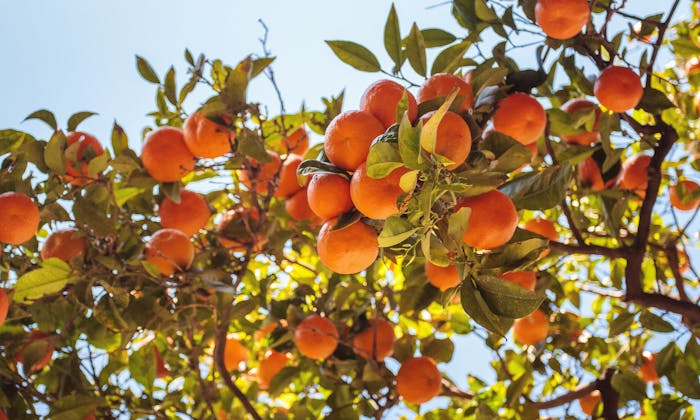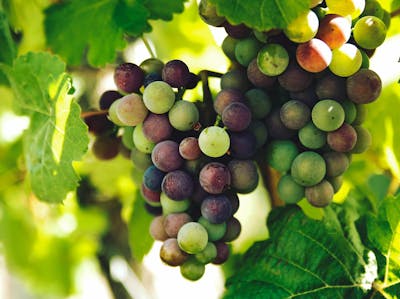If live in a house in Southern California there is about a 50% chance you already own at least one citrus tree. Here is everything you need to know to get the most out of that tree!
Citrus are foreign plants, originating almost exclusively in China. Yet oranges, lemons, limes, grapefruit, tangerines, lowquats and all of the other citrus fruits are ubiquitous in California. Those of us who live beneath the San Gabriel or San Bernardino mountains are probably very familiar with the history of orange and lemon groves that once dominated the landscape.
There is a very serious problem with growing citrus in Southern California right now, especially in the Los Angeles area. So I recommend tackling the disease section first, especially if you are considering adding citrus to your garden.
That said, you may have existing fruit trees in your yard that you are unsure how to care for. Are you getting poor fruiting? Sour oranges, or bitter lemons? Do the leaves look oddly speckled, curled, or otherwise unhealthy? Read on.
HLB, RCB Disease and Quarantine
If you have tried to buy citrus plants online, you may have noticed warning that they would not ship to California, yet you can go to a local nursery and pick one up easily. Why is that?
The answer is the Asian Citrus Psyllid bug, which carries a bacterial disease called Huanglongbing (HLB), that is potentially very devastating to California's citrus trees. Of course, citrus isn't just important to California because people grow them on their homes. Citrus is an important crop grown throughout the Central Valley and other farmland. HLB risks destroying a $7 billion economy in California.
The main way that HLB spreads is by transporting plants that are already infected with ACP. That is why nursery stock is being so tightly regulated. Local nurseries are allowed to sell citrus plants, but they are licensed and required to have the knowledge to recognize HLB infestations so that they do not perpetuate the spread of the disease.
Unfortunately, HLB doesn't just affect citrus plants, but all plants in the Rue family (Rutaceae). This includes Sichuan Pepper trees, and a tree that is particularly important to my family, the curry tree (Murraya koenigii).
How do you recognize HLB? You won't find the Asian Citrus Psyllid insects on your tree, they are far too tiny. What you will see is evidence of HLB, the bacterial disease that kills the trees.
The disease starts by yellowing the veins of leaves and spreads over time. Many diseases and nutrient deficiencies can cause tree leaves to yellow. With HLB, the yellowing is usually asymetric. You may notice only leaves on one side of the tree yellowing.
When this is happening, the tree will no longer grow. If the tree fruits, the fruit may not mature properly, you can end up with fruit that looks half ripe and small. And don't expect it to taste good!
Eventually the tree will die, it could take up to 5 years. Within that time, it makes no sense to keep the tree around since any fruit produced will not be tasty and the tree will only look sickly while acting as a factory for ACP. If you have a tree that you suspect has ACP/HLB, call the California Department of Food and Agriculture Exotic Pest Hotline (800)492-1899.
Should You Grow Citrus? In the face of HLB, it's a fair question to ask, should we regular citrus growers stop growing citrus trees and leave it up to the professional farmers who are experts at recognizing and responding to disease?
The prevailing advice seems to be that you are okay to grow citrus, as long as you do not transport it. Do not take homegrown oranges on your hike with you, or lemons to a friend's house for a party. It's possible your fruit is infected with ACP and your trees are not yet showing symptoms.
Citrus trees are wonderful producers and can be a great candidate for living a permaculture lifestyle. But it also makes sense to consider alternatives before planting a new citrus tree in your yard. Would you be just as happy with a plum or apricot tree? Here is a small list of fruit trees to consider instead of citrus:
- Apple
- Plum
- Peache
- Fig
- Jujube
- Loquat
- Persimmon
- Pomegranate
- Avocado
Why Grow Citrus?
Citrus trees are amongst the most useful trees to have around, particularly oranges and lemons. The best part is, once the fruit ripens it can stay on the tree either until it freezes. Or, for most of us in Southern California who don't get actual freezing, until it blooms, at which point you want the tree sending all of it's nutrients to the new food instead of the old.
In the U.S., we consume about 80 pounds of oranges per person, per year (70 pounds of that as juice). At a cost of $1.30 per pound, that's over $400 for the average 4 person household. Not a bad savings if you grow it yourself. If your family is like mine, there is also a not-insignificant amount of food waste that happens with store-bought goods because we bought more than we could eat in a week or two. When you pick your ripe oranges directly off the tree, that isn't really an issue.
If you are like me, when you think of citrus plants, you think of the typical medium sized lemon or orange tree. But there are actually a lot of different sizes of citrus trees, some make a good shrub or bush, and many can be kept small in a container and still produce a good amount of fruit. Our neighbor has a lemon tree that acts as a hedge between our yards that supplies us with just the right amount of lemons.
Growth Rate of Citrus Trees
Most people buy a citrus tree in a 5 gallon container. If that is the case, you can expect fruit in about 3-5 years after planting it in the ground. A typical citrus tree will take 10-15 years to reach full height. For a typical dwarf citrus tree, that suggests it will grow on average about 1-2 feet per year.
Water your Citrus Trees
Established trees will often survive in the ground with little or no supplemental water. When it comes to fruit trees, this can deceive you into believing they don't need water.
But citrus trees are tropical in nature. They actually need consistent but infrequent watering. Many people recommend giving your citrus tree a deep watering once per week. But this does not take into account your soil.
Many of us in Southern California have clay soil that is difficult to saturate with water, yet holds onto water for a long time. For this reason, it is important to check your soil before watering. In warmer weather, the top couple of inches of soil may dry out, but if you dig down a little you may find the soil is still quite damp. If you water too soon, the tree's roots may start to rot.
It is important that when you water you provide a good, deep water. The easiest way to do that is with a soaker hose or drip system. Ideally, you would have these provide water to the tree in two concentric circles, one slightly within the dripline and one slightly beyond. A nice slow watering over the course of an hour during the cooler part of the day should do the trick.
I still water my trees by hose. I often think about the way soaker hoses work when I do it. The dripline of a tree is significant. If you think of a tree as a person holding an umbrella, the drip line is the area around the umbrella where most of the rainwater falls.
This is where the tree's root system expects the most water to come from. This is where you want to saturate with water. And you want to do it as slowly as you can so the water soaks in rather than runs off. Set the hose on a trickle and move it around every ten minutes or so. It should take at least a half hour to really saturate the ground.
Fertilizing Your Citrus Trees
Citrus trees are heavy feeders so they need some sort of fertilizer. The best fertilizer is your own compost, which you should mix into the surrounding of the tree once a month during the growing season.
If compost is not an option, citrus fertilizer spikes can be really helpful. They release fertilizer into the ground slowly over several months. The slow release is necessary in order to avoid burning the roots of your tree, which chemical fertilizers are prone to.
Pests, Diseases and Nutrient Deficiencies
RCB and HLB Appears as yellow veins on leaves, progressing to the whole leaf. Characterized by asymmetrical yellowing of the tree's leaves. See RCB section for more info.
Dropping Flowers It's normal for a tree to lose some flowers without them becoming fruit. When most or all of your blossoms are dropping off, you may have a problem. Causes include:
- Age of the tree
- is it at least 3-5 years old?
- has it successfully fruited before?)
- Nutrition deficiencies
- Examine the leaves for other signs of nutrition deficiency
- Too much water
- Too much cold
- if a citrus tree experiences freeze after flower buds have started to form, you may lose all of the flowers and not get any fruit that year
Pale, Yellow Leaves Nitrogen deficiency. Add more compost or fertilizer.
Yellowish Leaves with Bent Ends Potassium deficiency. Fertilize with a potassium rich fertilizer, or compost with sufficient potassium sources, such as bananas or other fruit.
Necrotic Spots on Fruit and Leaves The fruit may have sections that are leathery or burnt looking. Leaves may also look burnt. This suggests sunburn. Is it receiving too much direct sunlight? Citrus trees love full sunlight, but may need some afternoon shading to prevent sunburn.



